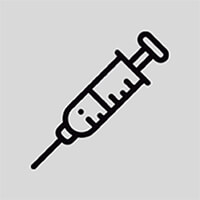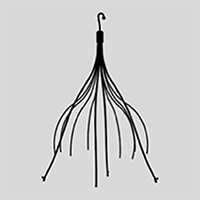
Anticoagulant therapy
Anticoagulation medications (blood thinners) are the most common first option to prevent PE. These work by slowing or eliminating the formation of threatening blood clots that could travel to the heart or lungs as PE. Anticoagulation medications may be delivered in several ways: orally (by mouth) from a pill or by injection into a vein (intravenously) or under the skin (subcutaneously) through a needle. Since anticoagulation medications thin blood, patients bleed more easily. Likewise, there are certain situations where anticoagulation medications are not recommended to be used (at least temporarily) or may not work. For instance, if you are at an increased risk of bleeding your doctor may consider placement of a vena cava filter.

Inferior vena cava (IVC) filter
The inferior vena cava is the main vessel that returns blood from the lower half of your body to your heart.
An IVC filter is a medical device that doctors can place in your IVC. Physicians have used IVC filters for more than 40 years to help prevent PE. IVC filters are an option for PE prevention, especially if you have already had a PE.
An IVC filter does not stop blood clots from forming. These devices are cage-like and usually cone-shaped. They are designed to catch blood clots as they travel through the IVC and prevent the clots from reaching your lungs. Blood continues to flow around and through an IVC filter.
IVC filters are often placed if blood-thinning medication cannot be used or was not effective. Some IVC filters are designed to be permanent implants, and some filters have the option to be removed after the risk of PE has passed.
You should not receive a filter if any of the following statements are true:
- Your doctor tells you that your IVC diameter is not the right size for a filter.
- You are at risk of septic embolism (a type of blood vessel blockage that can occur when pus-forming bacteria or other infectious organisms are in the bloodstream).
- There is so much clot present in the vein that your doctor is not able to pass a catheter through it safely.
IVC filters should not be removed if:
- Your doctor determines that you are still at risk of PE and you cannot take anticoagulation medication.
- More than 25% of the space inside your filter contains trapped blood clots. Even if this happens, your filter is designed to continue to trap clots while still allowing for blood to flow through the IVC.
- Your doctor decides that the risks of removing your filter are greater than the risks of leaving the filter in place.